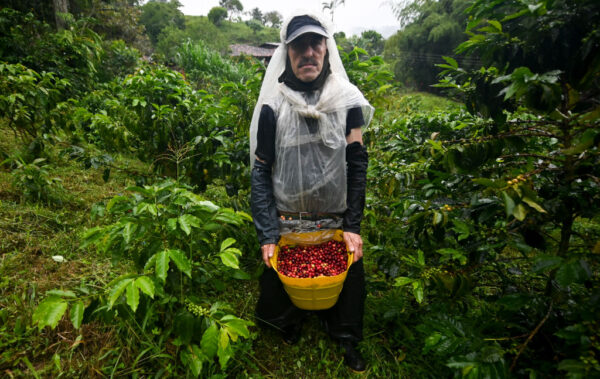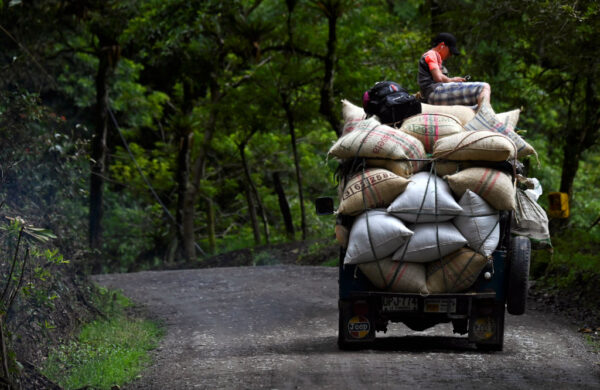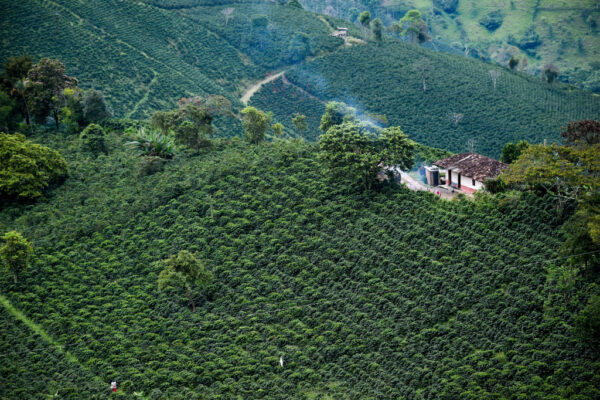Coffee Prices Rise as Bad Harvests Squeeze Supply: Reports
Coffee prices have spiked more than 25 percent in recent weeks, lifted by slow harvests in Latin Ame..
Coffee prices have spiked more than 25 percent in recent weeks, lifted by slow harvests in Latin America that have thinned inventories, while global demand is on the rise.
Coffee futures on the Intercontinental Exchange (ICE) hit $1.178 a pound on Monday, climbing from a low of 92.9 cents a pound on Oct. 17. Colombian Milds, the priciest coffee beans sales-tracked by the International Coffee Organization (ICO), climbed to $1.553 per pound on Tuesday in US markets.
A composite indicator that averages prices across different coffee bean types—including Other Milds, Brazilian Naturals, and Robustas—stood at $1.101 a pound on Tuesday. Some trading sessions in recent weeks have seen double-digit price differentials.

Dry Weather in Honduras
Traders cited by The Wall Street Journal blame the upward price pressure on thinning inventories caused by bad coffee bean harvests in Honduras. The country is the third-largest producer of arabica coffee in the world and is reeling from five years of consecutive droughts.
Earlier this month, Honduras declared a national emergency due to a severe drought that has decimated staple-crop harvests of beans and maize by up to 80 percent in some areas, according to government figures.


“The main issue is the cumulative impact of the years of drought,” said Etienne Labande, deputy director in Honduras of the World Food Programme (WFP), a U.N. agency.
“Over time, and with losses of the harvest, the problem is that people … dont have [food] stocks anymore. So every month, every week, every day, we have more people falling from moderate into severe food insecurity,” he said.


Another factor that could yield further upward price pressure is a rust fungus epidemic that threatens the existence of entire plantations.
“And for coffee farmers yet another problem, an epidemic of rust fungus—roya in Spanish—an insidious plant disease they liken to cancer, which grows quickly in dry, warm climates, destroying entire coffee plantations,” said PBS reporter Marcia Biggs, who interviewed producers in Honduras.
Special Situation
The rebound in coffee prices comes after months of historical lows, with prices falling by around 40 percent since the beginning of 2017, according to Nasdaq figures, and by nearly 70 percent since their 2011 highs of nearly $3 per pound.
“This is a special situation because optimism has not been seen in this market for a long time. Sellers have dominated the coffee chart for many years, and the entire market for this raw material was discussed in the context of a protracted crisis,” said Pawel Grubiak, president of Superfund TFI, in comments to Business Insider.
Valeria Rodriguez, a manager at Max Havelaar France, told AFP that what she called a crisis in low coffee prices was beginning to create “real structural problems” for producers.
“The consequences are terrible,” she said, adding that many producers could no longer support themselves or invest in production.


Pierre Ferrari, CEO of Heifer International, told a panel on Nov. 25 that persistently low coffee prices were partly to blame for the border crisis as desperate farmers priced out of the market seek other opportunities to make a living.
Ferrari said coffee farmers in Guatemala are being paid 62-63 cents a pound but face production costs of between $1.30 and $1.50. If they cant turnRead More – Source
